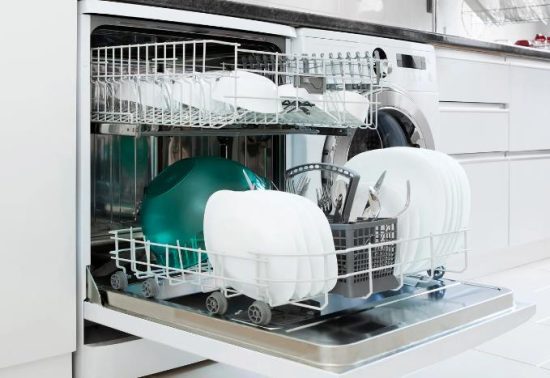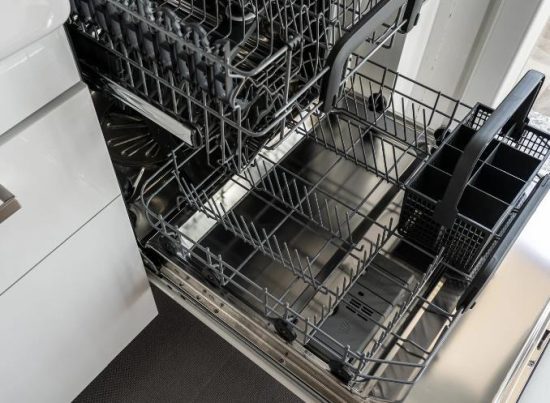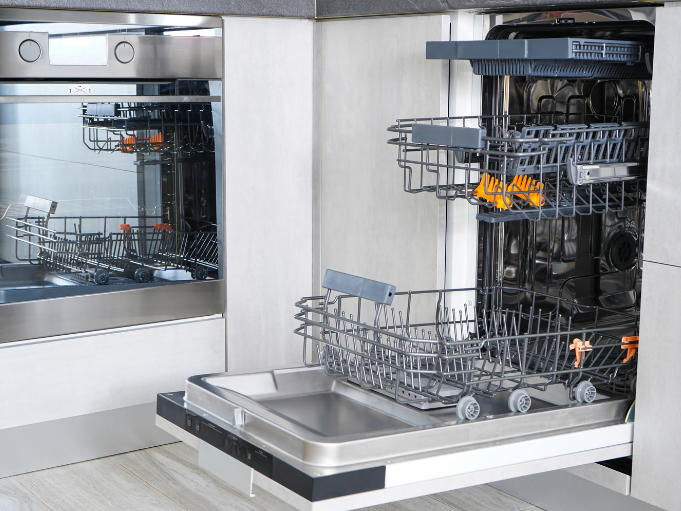Ever wanted to know how to take out a dishwasher? It’s a must-learn whether you’re getting a new one, renovating the kitchen, or just changing things around. Pulling out a dishwasher can feel overwhelming. But, don’t worry. You can do it in about an hour with a few tools and our easy guide. This works even if there are tricky hidden parts.
Excited to learn how to remove a dishwasher? Let’s get started!
Introduction to Dishwasher Removal
Removing a dishwasher must be done carefully to ensure it’s safe and effective. Whether replacing an old model, upgrading to a more efficient unit, or remodeling your kitchen, understanding the proper removal process is crucial. This blog provides detailed instructions and tips to facilitate smooth dishwasher removal. You can avoid common pitfalls such as water leaks and electrical hazards by following precise steps.
Ensuring you have the right tools and materials ready will also streamline the process and prevent damage to your home or the appliance. Learn how to disconnect and safely remove your dishwasher, preparing the space for whatever comes next.
Necessary Tools and Materials
Before starting, make sure you have all the tools and materials you need. This will make taking out your dishwasher easier and go smoothly. Having everything ready is a key step.
- Channel-lock pliers: Use these to take off hoses and fittings.
- Screwdriver: You’ll need it to loosen and remove the screws holding the dishwasher.
- Drop cloth (optional): It’s not a must, but a drop cloth will save your floor from damage or spills.
- Rags: Keep rags close by to clean up any mess quickly.
Being prepared with all the right tools will help you get moving on this project. You’ll save time and effort.
5 Steps for How to Remove a Dishwasher?
1. Preparatory Steps: Ensuring Safety and Readiness
Before starting the removal process, ensure all safety measures are in place. Turn off the power to the dishwasher at your home’s circuit breaker to prevent any electrical hazards. Double-check using a voltage tester at the appliance to confirm no power is present. Similarly, shut off the water supply to the dishwasher, typically found under the kitchen sink, to avoid any leaks during the removal.
Secure the area by clearing a path for safe and easy removal of the appliance. It’s also a good idea to have towels or a bucket handy if there are any residual water drips when disconnecting the hoses. This preparatory phase is important to ensure a smooth and safe removal process.
- Disconnecting the Power Source: First, flip the circuit breaker off. This stops electricity reaching the dishwasher. After, you can safely unplug it from the wall.
- Shutting off the Water Supply: Turn off water to the dishwasher next. Find the valve under the kitchen sink and twist it to stop water. This avoids leaks and flooding while you work.
By cutting the power and water, you make the area safe. You also help prevent any issues while moving the dishwasher.
“Disconnecting the power source and shutting off the water supply are crucial safety precautions to take before removing a dishwasher.”
2. Disconnecting the Dishwasher

Begin the disconnection by ensuring that the power to the dishwasher is completely turned off. Unplug the dishwasher from the wall socket if accessible, or if it’s hardwired, prepare to disconnect the wiring later under safe conditions. Next, locate the water supply line under the sink or behind the dishwasher and turn the valve to the off position. Disconnect the water supply line from the dishwasher using an adjustable wrench; keep a towel handy to catch any water that escapes.
Also, disconnect the drain hose from the main drain line or the garbage disposal, directing any remaining water into a bucket. Handling these components gently is essential to avoid damaging the connections, which could lead to leaks when installing a new unit. These steps help ensure that all critical connections to the dishwasher are safely severed.
Pro Tip:
Before you stop the water, put something to catch drips. A bucket or a towel under the valve is a good idea. It will keep your kitchen dry.
With the power and water safely turned off, you’re ready to move the dishwasher. Following these steps makes taking it out easier and cleaner.
3. Detaching the Dishwasher from Cabinetry

After disconnecting all utilities, detach the dishwasher from the cabinetry. Start by locating the mounting brackets, usually attached to the underside of the countertop or the sides of the cabinet. Remove all the screws fixed the dishwasher in place, storing them carefully for potential reuse. With the screws removed, check if there are any additional securing devices or straps that need to be addressed.
Sometimes, dishwashers are fitted with anti-tip brackets or clips that must be removed. Gently rock the dishwasher slightly to ensure it is free from additional attachments. This step is vital to ensure that when you pull the dishwasher out, it moves freely without causing damage to surrounding cabinetry.
Here are the steps to detach the dishwasher:
- Locate the screws or fasteners on the sides or top of the dishwasher.
- Use the screwdriver to unscrew each one gently. Be careful not to strip the screws. Apply gentle pressure if needed.
- Set the screws aside once they’re loose to keep them safe.
- Remove any additional fasteners, like brackets or clamps, with care and the right tools.
- Then, pull the dishwasher away from the cabinetry gently. Be sure not to damage the surroundings.
Following these steps will help detach the dishwasher safely. Be patient and work with care not to harm the dishwasher or cabinets.
4. Removing the Dishwasher from Its Position

Carefully slide the dishwasher out from its cabinet with all attachments and utilities disconnected. Place a drop cloth or cardboard on the floor to protect your kitchen flooring from scratches and scuffs. As you pull the dishwasher out, be mindful of the hoses and wiring to ensure they are not snagged or pulled too taut.
Having an assistant who can help guide the hoses and wires as you move the dishwasher may be helpful. Continue to pull the dishwasher out slowly, checking periodically to ensure nothing gets caught or damaged in the process.
Once the dishwasher is sufficiently clear of the cabinetry, gently lower it onto the drop cloth to fully disconnect any remaining hoses or wiring. This careful movement prevents accidental damage and ensures the dishwasher is removed smoothly. Safely pulling out a dishwasher is key to prevent damage or harm. Follow these tips, and taking out the dishwasher will go smoothly. This approach is a big help in finishing this job successfully.
5. Post-Removal Considerations
If you’ve removed your dishwasher, there are key things to remember now. Once the dishwasher is removed, assess the now-vacant space to plan for future use. If you plan to install a new dishwasher, verify that the area is clean and ready for the new appliance. Consider additional storage, shelving, or even a new cabinet if you’re repurposing the space. Check the floor for any damage or leaks that might have occurred during removal and address these issues promptly. For those with a hardwired dishwasher, consider hiring a professional electrician to cap off the wiring to ensure proper safety.
Finally, responsibly dispose of or recycle your old dishwasher according to local regulations, possibly consulting with waste management services to handle it appropriately. These considerations ensure that the removal process is completed responsibly and that your kitchen is prepared for the next steps, whatever they may be.
- Electrical disconnection: If it was hardwired, get a licensed electrician to disconnect it. This keeps you safe and follows the rules.
- Space utilization: The spot where the dishwasher was is now free. You can use this to add more space for storage. Think about adding more cabinets or special shelves for a better kitchen.
By keeping these points in mind, you’ll safely get rid of your dishwasher. Plus, you can make the area more useful. This means you’re set for a new dishwasher or a kitchen upgrade!
Conclusion
Removing a dishwasher might seem like a big job. But, with the right info and tools, you can do it safely and without hassle. By sticking to the steps in this guide, you’ll easily take out your dishwasher.
For safety, always turn off the power and water first. When disconnecting the dishwasher, remember to turn off the circuit breaker and unplug it. Also, stop the water supply to avoid any flooding. Then, you can unscrew or unfasten the dishwasher from the cabinets.
Next, carefully pull the dishwasher out. It really helps to have someone with you. They can guide the pipes as you pull the dishwasher. This way, you can avoid any damage to your floors. A big cloth under the dishwasher will also protect your floor.
If you’re dealing with a dishwasher that was connected straight to the wall, call a licensed pro to help. You can also get creative with the space. Add a new cabinet or some shelves for extra storage. Following these suggestions, you’ll finish removing your dishwasher in no time.
FAQs on Removing Dishwasher
How to remove a dishwasher door?
To remove a dishwasher door, unscrew the hinges from the frame, and carefully detach any electrical connections for models with controls on the top of the door.
How to remove a dishwasher filter?
Locate the filter at the bottom of your dishwasher, twist to unlock, and lift it out for cleaning or replacement.

